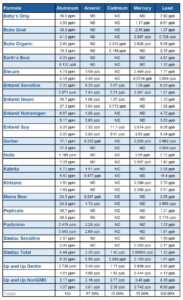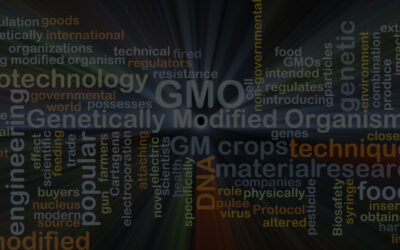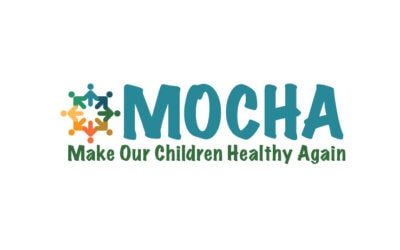Article 3 in the Got Real Milk Series
NOTE: The infant formula toxic metal study is a joint collaboration project by Zen Honeycutt, Stephanie Seneff, PhD , and Michelle Perro, MD. The results of their study are presented in their monthly podcast, The New MDS on May 21, 2024.
Infant formula is a crucial source of nutrition for babies who are not breastfed or is utilized as a supplement to breast-feeding. Ensuring its safety and quality is paramount since infants are particularly vulnerable to contaminants due to their developing biological systems. Toxic metals such as aluminum, lead, arsenic, cadmium, and mercury pose significant health risks. Chronic exposure to these metals, even in small amounts, can lead to developmental issues, cognitive impairments, and other serious health conditions. Hence, studying the presence of these toxic metals in infant formula is vital to safeguard the health and well-being of infants.
Combinations of toxic metals produce negative synergy and have not been assessed in regard to toxicity in terms of childhood development. All organ systems are at risk. There is a cumulative effect and levels increase during periods of high cellular turnover, pregnancy, lactation, during early infant growth, and with various nutrient deficiencies such as iron and vitamin D. Additionally, these metals can cross the sensitive infant’s blood brain barrier which is underdeveloped until approximately 6 months of age.
Data Summary
In our study examining the presence of toxic metals in infant formula, all 40 samples tested positive for concerning levels of heavy metals, specifically aluminum and lead. Each type of formula was tested twice, yielding 20 distinct formula types in total. Here is a breakdown of the findings:
- Aluminum: Detected in 100% of the samples, with levels ranging from 1.61 ppm to 41.0 ppm. At 41,000 ppb, aluminum levels in a goat’s milk formula were 4,000 – 40,000 time higher than other metals in the tested formulas and exceed limits set by the FDA for maximum safety level of aluminum in parenteral nutrition for a premie.
- Lead: Also present in 100% of the samples, with concentrations ranging from 0.208 ppb to 8.36 ppb.
- Arsenic, cadmium, and mercury: Detected in a significant number of samples, posing additional risks. 57% of the samples tested positive for arsenic, 55% for mercury, and 35% for cadmium.
- Levels of mercury in 4 samples measured above the limit allowed by the FDA in drinking water.
- Levels of cadmium in both samples of one formula were nearly twice the level allowed in drinking water.
- Of interest, the hypoallergenic elemental formulas had low toxic metal amounts, which requires further analysis as to why this occurred. Six of the 20 formulas were positive for all 5 toxic metals in both samples tested.
- From Dr. Renee Joy Dufault: “There were no common ingredients to explain any of the elevated levels except for corn syrup solids and vegetable oils.”
- From Dr. Gilles-Eric Seralini: “We have identified heavy metals and petroleum residues 6600 times more dangerous in conventional food than in equivalent organic products in Europe due to pesticides.”
- These results highlight a pervasive issue with heavy metal contamination in infant formula, underscoring the need for immediate attention and action.
Detailed Insights on the Data
Variability in Metal Concentrations
The concentration of toxic metals varies significantly across different brands and types of infant formula. For instance, aluminum levels range from 1.61 ppm to 41.0 ppm, indicating inconsistent contamination levels. Lead levels also show a wide range, from 0.208 ppb to 8.36 ppb. This suggests that some formulas are much safer than others, but all still contain detectable levels of lead.
High-Risk Formulas
Certain formulas, such as those made from goat milk, exhibit particularly high levels of aluminum. For example, Bubs Goat Milk Infant Formula showed the highest aluminum concentration at 41.0 ppm. Products like Enfamil Sensitive Infant Formula displayed notable levels of multiple heavy metals, including aluminum (8.87 ppm), arsenic (1.88 ppb), cadmium (ND), and mercury (0.442 ppb).
Cross-Contamination Concerns
The presence of multiple metals in the same sample indicates potential cross-contamination during manufacturing or from raw materials. For example, Earth’s Best
Organic Sensitivity Infant Formula contained detectable levels of aluminum, cadmium, and mercury, raising concerns about the purity of the ingredients used.
Organic vs. Non-Organic
Both organic and non-organic formulas were found to contain toxic metals, challenging the perception that organic products are inherently safer in terms of heavy metal contamination. For instance, Baby’s Only Organic Infant Formula contained detectable levels of aluminum (3.5 ppm) and lead (0.775 ppb), similar to non-organic counterparts.
Potential Health Implications
Chronic exposure to these metals, even at low levels, can have cumulative effects on infants, potentially leading to developmental and neurological issues, carcinogenic, as well as the initiating the development of chronic diseases later in life. Given the critical growth period in infants, even small amounts of toxic metals can have disproportionately large impacts as compared to adults.
Formulas Evaluated
While there are many formulas available to consumers, at least 50 were counted, offering a confusing array of choices for parents. However, there are 4 main formula
producers in the US including Abbot, Mead Johnson, Nestle, and Perrigo. Different companies utilize some of the bigger formula manufacturers. Formulas were prioritized for evaluation based on whether they contained high fructose corn syrup (HFCS), which may contain undeclared mercury as per the work of Dr. Renee Joy Dufault. Due to limited funding, we were only able to include one soy formula at this time. Future and further studies are necessary.
The following types of formulas were assessed: Dairy-based, soy, organic, US, and international brands. Brands were chosen based on the content of HFCS. Additionally, options were chosen depending on common places of purchase of formulas as well as formulas included in governmental assistance programs such as WIC (Women, Infants, and Children).
Formulas studied in alphabetical order:
- Baby’s Only Organic Infant Formula with Iron
- Bubs Goat Milk Infant Formula Stage 1
- Bubs Organic Grass Fed Infant Formula Stage 1
- Earth’s Best Organic Sensitivity Infant Formula with Iron
- EleCare Hypoallergenic Powder Infant Formula
- Enfamil Sensitive Infant Formula
- Enfamil NeuroPro Gentlease Powder Infant Formula
- Enfamil Nutramigen Hypoallergenic Infant Formula
- Enfamil Plant-Based Soy Powder Infant Formula
- Gerber Good Start Gentle Pro Stage 1 Infant Formula
- Holle Bio PRE Organic Infant Formula
- Kabrita Goat Milk-Based Infant Formula
- Kirkland ProCare Non-GMO Infant Formula
- Mama Bear Hypoallergenic Infant Formula Powder with Iron
- Pepticate Hypoallergenic Baby Formula
- PurAmino Hypoallergenic Infant Formula
- Similac Sensitive Infant Formula
- Similac Total Comfort Infant Formula
- Up & Up Gentle Premium Powder Infant Formula
- Up & Up Non-GMO Hypoallergenic Powder Infant Formula
Findings
Action Items
Regulatory Oversight
- Enhanced Regulations: The FDA and other regulatory bodies must establish stricter guidelines and permissible limits for toxic metals in infant formula. This action has been already put into our place since our meeting with the FDA prior to the release of our data reported in this blog by Moms Across America.
- Regular Testing: Mandatory, routine testing for heavy metals in all infant formula products should be enforced to ensure compliance with safety standards.
- Transparent Reporting: Companies should be required to disclose test results publicly, promoting transparency and accountability.
Proactive Measures by Companies
- Sourcing and Production Controls: Infant formula manufacturers must implement rigorous controls over their raw materials
and production processes to minimize contamination. - Regular Audits: Frequent internal and third-party audits should be conducted to ensure adherence to safety protocols and identify potential sources of contamination.
- Research and Development: Investment in research to develop technologies and methods for removing or reducing heavy metal content in infant formulas.
Remediation Solutions
- Advanced Filtration Systems: Implementing advanced filtration technologies during production to remove toxic metals.
- Ingredient Substitution: Identifying and using alternative, less contaminated sources of raw materials.
- Chelating Agents: o Exploring the use of safe chelating agents that can bind to metals, making them less bioavailable and reducing their toxic effects.
What the Data Means to Moms
For mothers and caregivers, these findings can be alarming. However, it is essential to understand the implications and take informed steps to ensure the safety of their infants. Breastfeeding remains the best option for infant nutrition, when possible, as it naturally minimizes exposure to contaminants.
Recommendations Based on Data
- Prioritize Breastfeeding: Whenever possible, opt for breastfeeding to provide the safest and most natural nutrition for your baby.
- Choose Carefully: When breastfeeding is not an option, select infant formulas that have been independently tested and verified for low levels of toxic metals. Maximize moms’ diet utilizing organic regenerative whole foods, including an array of fermented foods, filtered water, and nutritional supplements, such as prenatal vitamins and probiotics.
- Stay Informed: Keep abreast of the latest research and reports on infant formula safety to make informed decisions.
- Support initiatives and petitions calling for stricter regulations and safer infant formula products. (See the end of this article for a petition/call-to-action.)
Sample Considerations
The recommendations based on our findings proved challenging since all formulas tested positive for aluminum and lead. Other difficult considerations were based on the fact that not all metals are equally toxic and it is unclear whether having more metals at lower amounts was more toxic than fewer metals with higher amounts. The literature did not prove helpful in this regard.
Hence, the best attempts were made to offer advice for concerned parents based on this one study of toxic metals without other concomitant toxicants studied. A scorecard was designed, rating the formulas from 1 – 3, with 1 being the best based on 5 toxic metals studied and without consideration of other factors. The formulas were chosen for lowest levels of lead, mercury and cadmium. Lower levels of aluminum were considered since they all tested positive.
There were no ideal formulations, and the recommendations were based on the 20 tested. There were differences in the two samples of the same formula which may not be statistically significant.
Overall formula recommendations: 1
- Similac Sensitive infant formula
- Kirkland ProCare Non-GMO infant formula – NOTE: My top choice factoring in other contaminants/pesticides
- PurAmino hypoallergenic powder infant formula (For babies with digestive issues requiring predigested formulas)
Formula recommendations: 2
- Gerber Good Start Gentle Pro
- Earth’s Best Organic Sensitivity Formula
Formula recommendations: 3
- Enfamil Sensitive Infant Formula
- Similac Total Comfort Infant Formula
- Up & Up Gentle Premium Powder Infant Formula
- Up & Up Non-GMO Hypoallergenic Powder Infant Formula
- Enfamil Plant-Based Soy Powder Infant Formula
Strategic Recommendations
Targeted Research
- Understand Contamination Sources: Conduct further research to understand the sources of metal contamination in infant formulas, including soil contamination with pesticides, water used in manufacturing, and packaging materials.
- Long-Term Health Impacts: Investigate the long-term health impacts of chronic exposure to low levels of these metals in infants.
Consumer Guidance
- Interpreting Lab Results:Educate parents on how to interpret lab results and select formulas with the lowest possible contamination levels.
- Support Safe Feeding Practices: Provide resources and support for parents to transition to safer feeding practices, whether through breastfeeding support or safer formula alternatives.
Enhanced Testing Protocols
- Rigorous Testing: Mandate formula manufacturers to adopt more rigorous testing protocols, including testing for a broader range of contaminants and more frequent testing intervals.
- Standardized Procedures: Advocate for standardized testing procedures across the industry to ensure consistency and reliability in reported results.
Supply Chain Transparency
- Transparency: Push for greater transparency in the supply chain of infant formula ingredients. This includes sourcing, production processes, and quality control measures.
- Traceability: Implement traceability measures to identify and mitigate contamination sources promptly.
Policy and Advocacy
- Environmental Contamination: Support policy initiatives aimed at reducing environmental contamination, as many of these metals enter the food chain through polluted air, water, and soil.
- International Cooperation: Advocate for international cooperation to address the global nature of food safety, as ingredients are often sourced from multiple countries.
Summary
The presence of toxic metals in infant formula is a critical issue that demands immediate action.
Public education is crucial to raise awareness among parents and caregivers about the potential risks and safety measures. Regulatory action by Congress is necessary to empower the FDA and other agencies to enforce stringent safety standards. Additionally, formula companies must take corrective actions to ensure their products are safe.
To address this issue, we are initiating a petition to urge Congress to remove any barriers preventing the FDA from enforcing these necessary regulations. In the meantime, parents can consider various supplements that may help offset the toxicity, although this should be done in consultation with healthcare professionals.
By working together—regulators, companies, and consumers—we can ensure that infant formula products are safe and healthy for our most vulnerable population, our babies.
References:
- https://www.fda.gov/food/resources-you-food/infant-formula#oversee
- https://www.fda.gov/food/resources-you-food/infant-formula
- https://www.fda.gov/food/buy-store-serve-safe-food/handling-infant-formula-safely-what-youneed-know
- https://www.fda.gov/food/consumers/agricultural-biotechnology
- https://www.fda.gov/food/people-risk-foodborne-illness/food-safety-infants-toddlers
- https://www.fda.gov/food/infant-formula-guidance-documents-regulatory-information/enforcement-discretion-manufacturers-increase-infant-formula-supplies#regular
- https://www.fda.gov/media/71695/download?attachment
- https://www.scirp.org/journal/paperinformation?paperid=53106
- https://www.researchgate.net/profile/David-Kennedy-40/publication/333582853_Environmental_toxicants_and_infant_mortality_in_America_Peertechz_Journal_of_Biological_Research_and_Development_11_36-61/links/5d111f6592851cf440492ee1/Environmental-toxicants-and-infant-mortality-in-America-Peertechz-Journal-of-Biological-Research-and-Development-11-36-61.pdf
- unsafe at any level
- https://reneedufault.com/
- https://gmoscience.org/
- https://www.momsacrossamerica.com/
- https://www.ewg.org/research/ewgs-guide-infant-formula-and-baby-bottles
- https://www.inonaround.org/baby-formula/
- https://projecttendr.thearc.org/
- https://hbbf.org/
- https://www.hbbf.org/solutions/healthy-baby-foods
- Developmental pesticide exposure reproduces features of attention deficit hyperactivity disorder
- Prenatal Mercury Exposure and Neurodevelopment up to the Age of 5 Years: A Systematic Review
- Fetal and postnatal metal dysregulation in autism
- Lead and mercury exposures: interpretation and action
- https://www.nass.usda.gov/Surveys/Guide_to_NASS_Surveys/Chemical_Use/WheatPostharvestChemicalUseFactSheet.pdf




